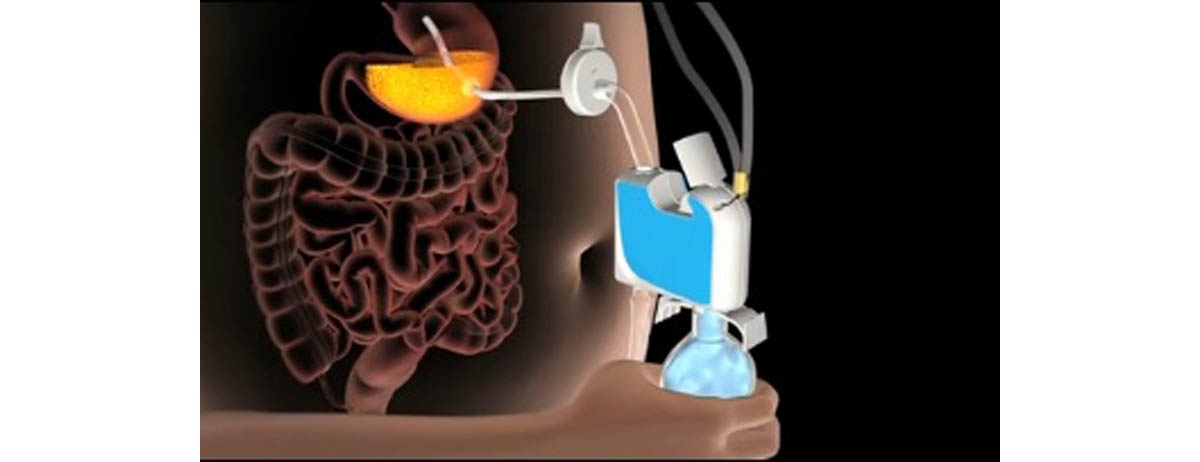Table of Contents
People who suffer from obesity will go to astonishing lengths to have their cake and eat it, too. The latest innovation in surgically assisted weight loss is the AspireAssist Aspiration Therapy System.
This reversible and non-invasive medical device enables the user to pump out their stomach contents through a "second anus" surgically implanted into the abdomen.
This surgical orifice enables patients to simply dispose of undigested food into the toilet. If you use the device, then it is possible to get stuffed to the gills all over again.

The AspireAssist device sounds like medically induced bulimia (the finger-down-your-throat obsessive compulsive disorder that enables some people to lose weight in a similar manner), but initial reports are that it actually works — with this device, obese patients lose more weight than their peers who received counseling and went on a diet. Some even lose as much as 100 in the year after they have the device installed.
What Is the AspireAssist?
The AspireAssist device was invented by two gastroenterologists, Dr. Moshe Shike and Dr. Sam Klein, who worked with an interventional radiologist named Dr. Stephen Solomon. The AspireAssist device is designed to help its users aspirate, or empty, their stomachs after a meal, pumping out recently eaten food so that it can be flushed away before the body has an opportunity to absorb nutrients, leading to further weight gain.
The AspireAssist device only removes about 30 percent of the food present in the stomach at any given time (although this depends on the user's having enough experience with the device and presence of mind to stop pumping the stomach soon enough), allowing the other 70 percent to be digested and pass to the small intestine.
The AspireAssist device consists of a flexible silicone rubber tube called the A-tube. This conduit is surgically placed in the stomach. This tube directly connects the inside of the stomach to an opening about the size of a US quarter on the outside of the abdomen, similar to an ostomy. The A-Tube can easily be opened or closed with a "Skin-Port" that the patient uses to control the flow off food.
How Do Dieters Use the AspireAssist?
Dieters eat their regular meals, and then wait 20 to 30 minutes for the chewed food to reach the stomach. Then in the privacy of a bathroom, they can open the Skin-Port to drain food directly into the toilet. The process takes 5 to 10 minutes. Dieters have to use the device three times a day, within half an hour after eating meals, for the early stages of weight loss. After the user has begun to lose a significant amount of weight, the device might be used just once or twice a day.
The AspireAssist isn't meant to be an alterative to embracing a healthy diet and lifestyle, as such, but it can help obese people gradually get used to eating healthier and less food while ensuring that the harmful impact of inevitable binges is significantly reduced.
Does AspireAssist Really Work?
The makers of the AspireAssist device inittially stated that they tested the system on 24 American patients for 12 months. All of the patients enrolled in the clinical trial were obese, with BMI's between 36 and 45. The average weight loss among users of the device was 20 kilos (about 45 pounds), with some dieters losing as many as 45 kilos (about 100 pounds) in their first year. The fastest weight loss occurred during the first four months after it was installed, with almost all weight loss in the first six months of using the device. For most users, slow but steady weight loss occurred over the next six months.
- Billingsley-Marshall RL, Basso MR, Lund BC, Hernandez ER, Johnson CL, Drevets WC, McKee PA, Yates WR. Executive function in eating disorders: The role of state anxiety. Int J Eat Disord. 2013 Jan 28. doi: 10.1002/eat.22086. [Epub ahead of print]
- Yagi T, Ueda H, Amitani H, Asakawa A, Miyawaki S, Inui A. The role of ghrelin, salivary secretions, and dental care in eating disorders.Nutrients. 2012 Aug
- 4(8):967-89. Epub 2012 Aug 13.
- Photos courtesy of www.aspirebariatrics.com

